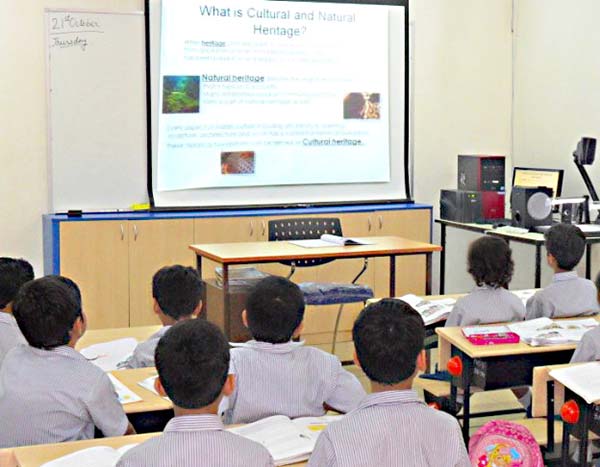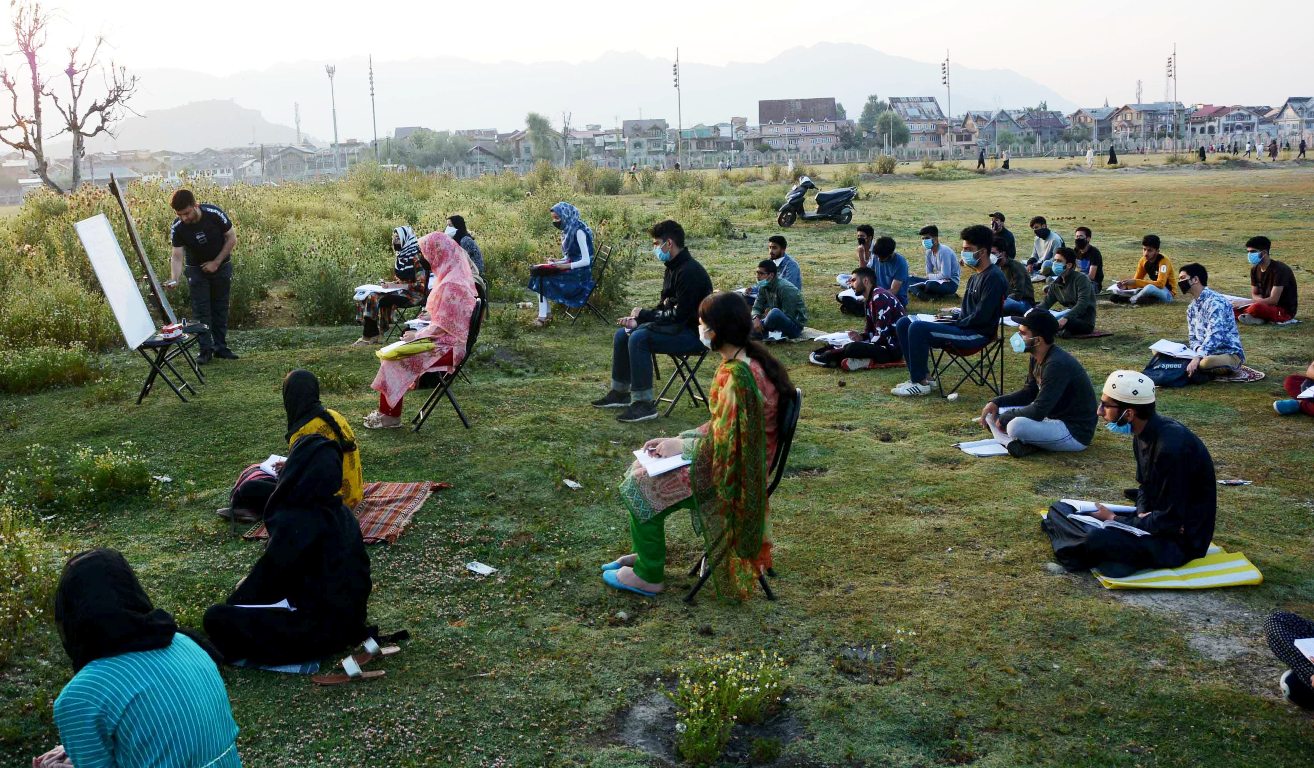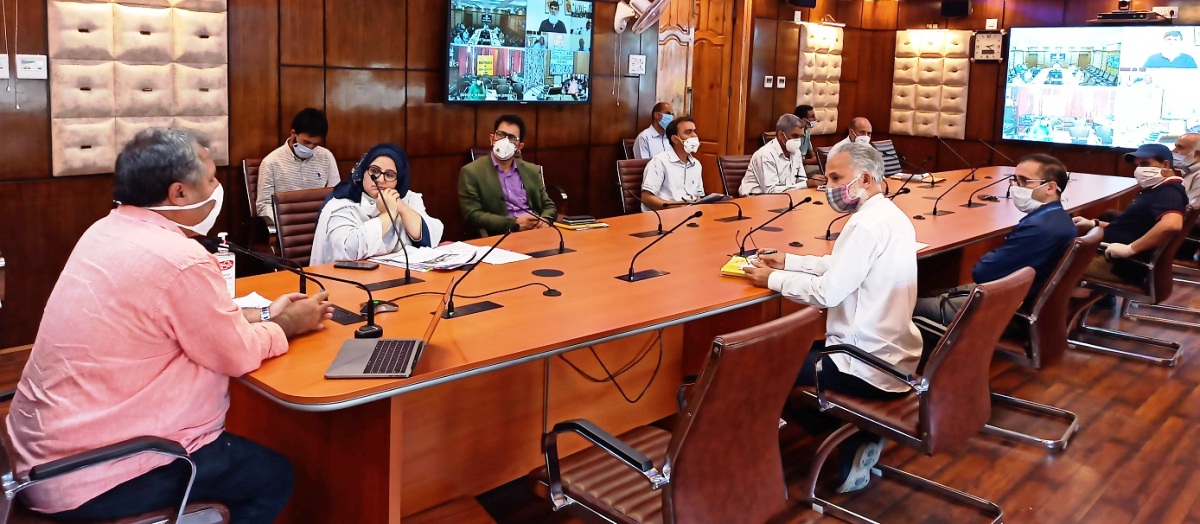by M A Shah
The students have to be given an open or free hand to decide about their life, education, career, and not pressurizing them for getting good marks.

New Education Policy, which is aligned with SDG-4, intends to bring a systematic reform in the education sector, proposes the revision and revamping of all aspects of the current education structure, including its regulation and governance. The policy forges a new system that is on par with the aspirational objectives of twenty-first-century education. Covid-19 has undeniably changed the education landscape and challenges during the implementation of New Policy can be addressed dynamically:
(a) Restructuring of institutions: All higher education institutions (HEIs) have to be restructured into three categories:
(i) Research universities focusing equally on research and teaching,
(ii) Teaching universities focusing primarily on teaching.,
(ii) Degree-granting colleges primarily focused on undergraduate teaching.
All the above institutions will gradually move towards full autonomy – academic, administrative and financial. Affiliation of colleges will be phased out and Graded Autonomy will be given to colleges on the basis of the status of their accreditation.
With multiple exit options, the students can take a sabbatical and join again after some time. A certificate will be awarded after completing one year in a discipline, an advanced diploma after 2-years and a Bachelor’s degree after a 3-year program. A 4-year multidisciplinary Bachelor’s programme will be the preferred choice for the students as they will be awarded a degree with research if they complete a project alongside their degree. Even in technical institutions after three years, B Sc Engineering can be awarded. Parents, teachers and students welcome this flexible approach and skilful learning.
Thus, the administration should classify the existing institutions into three categories and the institutions should be equipped and expanded accordingly. Even the leadership for such institutions need to be reshuffled and re-arranged.
(b) Multidisciplinary Education: In phase first few, Higher Education Institutions (HEIs) should be made multidisciplinary to integrate humanities and arts with science, technology, engineering and mathematics. Setting-up of Multidisciplinary Education and Research Universities (MERUs), at par with IITs, as a model of best multidisciplinary education is a challenge.

IITs/NITs are on the path towards more holistic and multidisciplinary education strengthening more arts and humanities faculties. The multidisciplinary education would prepare students for multi-functional jobs which they may take up over their lifetimes that should make them less dependent on Government sector jobs and equipping the students with the key skills besides creating holistic and well-rounded individuals.
A university will mean a multidisciplinary institution that offers undergraduate and graduate programmes, with high-quality teaching, research, and community engagement. I believe few universities in Jammu and Kashmir can be converted into multidisciplinary universities, having options for expansion and integration.
NEP aims of setting up at least one large multidisciplinary institution in or near every district so should be our endeavours. These multidisciplinary institutions will bridge the gap between the current state of learning outcomes and what is required in this century by undertaking major reforms that bring the highest quality and equity.
(c) College Admission Entrance Exams: Common aptitude test, as well as specialised common subject exams in the sciences, humanities, languages, arts, and vocational subjects, will be held at least twice every year. The common examination shall test conceptual understanding and the ability to apply knowledge and shall aim to eliminate the need for taking coaching for these exams.
National Testing Agency (NTA) will conduct a common entrance examination (CEE) for admissions to universities across the country. The high quality, range, and flexibility of the NTA testing services will enable most universities to use these common entrance exams – rather than having hundreds of universities each devising their own entrance exams – thereby drastically reducing the burden on students, universities and colleges, and the entire education system.

Thus we need to make/train our students for conceptual understanding. We, teachers, have to change the modes and methods of teaching, to say goodbye to rote learning. Many initiatives to help to conduct on-line examinations are praiseworthy.
(d) National Repository of Education Data: Academic Bank of Credit (ABC) shall digitally store academic credits to facilitate Transfer of Credits. An Academic Bank of Credit shall be established which would digitally store the academic credits earned by the student from various recognized HEIs so that the degrees from an HEI can be awarded taking into account credits earned so that these can be transferred and counted towards final degree earned.
So, all institutions have to establish ABC unit which shall probably be interconnected like ATMs. This will have benefits to students beyond imagination.
(e) Foreign Universities: High performing Indian universities will be encouraged to set up campuses in other countries. Similarly, selected top global universities will be permitted to operate in India. A legislative framework facilitating such entry will be put in place. Such universities will be given exemptions from regulatory and governance norms on par with autonomous institutions in the country. I visited BITS Dubai campus, a well-established institution of Higher Education, flourishing and faithfully serving humanity.
NIT Srinagar a few years back attempted to establish a campus in Dubai but failed miserably. Now with this policy, NIT and few other established universities can make it possible. Technology will play a major role in academics and the administration.
(f) Technology In Education: National Education Technology Forum (NETF) will be set up to facilitate decision making on the induction, deployment and use of technology. This Forum will provide evidence-based advice to central and state-governments on technology-based interventions. Technology will play a major role in academics and the administration.
Technology-based education platforms, such as SWAYAM, will be better integrated across the school and higher education and will include ratings/reviews by users, so as to enable content developers to create user-friendly and qualitative content. Benefits of online/digital education cannot be leveraged unless the digital divide is eliminated through concerted efforts and the availability of affordable computing devices.
There is a need to invest in the creation of an open, interoperable, evolvable, public digital infrastructure in the education sector that can be used by multiple platforms.
(g) Establishment of Higher Education Council of India (HECI): Higher Education Commission of India (HECI) will be set up as a single umbrella body for the entire higher education, excluding medical and legal education. Public and private higher education institutions will be governed by the same set of norms for regulation, accreditation and academic standards. Also, HECI will be having four independent verticals namely:
- National Higher Education Regulatory Council (NHERC) for regulation,
- General Education Council (GEC) for standard-setting,
iii. Higher Education Grants Council (HEGC) for funding,
- National Accreditation Council (NAC) for accreditation.
These reforms look holistic, flexible and going to promote multi-disciplinary education with an increased focus on basic skills, to make the life of students more natural and attract foreign education players to the country.

Other Issues:
- Gross Enrolment Ratio in higher education to be raised to 50%. The current Gross Enrolment Ratio (GER) in higher education is 26.3%.
- 3.5 crore seats to be added in higher education. This is a big challenge.
- National Research Foundation will be created as an apex body for fostering a strong research culture and building research capacity across higher education.
- A National Higher Education Qualification Framework (NHEQF) will be formulated by the GEC and it shall be in sync with the National Skills Qualifications Framework (NSQF) to ease the integration of vocational education into higher education.
- National skills qualifications framework for each discipline vocation and profession. The NEP aims to ensure that at least 50% of learners in school and higher education should be exposed to vocational education. This has to be taken on priority.
- HECI will replace the existing National Council for Teacher Education (NCTE), All India Council for Technical Education (AICTE) and the University Grants Commission (UGC), giving a single-window system to the nation.
So according to the New Education Policy, students have to be trained in analytical and critical thinking. The emphasis on concepts, ideas, innovations, research applications and problem-solving can make learning holistic, enjoyable and engaging. The students have to be given an open or free hand to decide about their life, education, career, and not pressurizing them for getting good marks. More so, science education is a must and it should teach students the scientific method to differentiate between good science and pseudo-science.

The new norms will reduce regulatory hassles, promote autonomy, benefits students and education providers. Granting autonomy, constituting Board of Governors (BOGs) of institutions/ universities is a blessing but should be used for all good purposes. This is possible; the Members of the Board need to be visionary, competent, committed and above all daring like Prof K L Chopra, two times Director of IIT Kharagpur, of whom I am an admirer.
As the Covid-19 pandemic continues, colleges and universities must develop resilient teaching models that facilitate learning experiences designed to be adaptable to fluctuating conditions and disruptions across all learning modalities in-person/ online.
(Author has a doctorate in Condensed Matter Physics and has taught at the King Abdul Aziz University Jeddah. Currently, he is Senior Associate Professor (Principal Investigator) at the Special Centre of Excellence for Nanosciences, at National Institute of Technology Srinagar’s Department of Physics. The opinions expressed in this article are those of the author’s and do not purport to reflect the opinions or views of Kashmir Life.)















